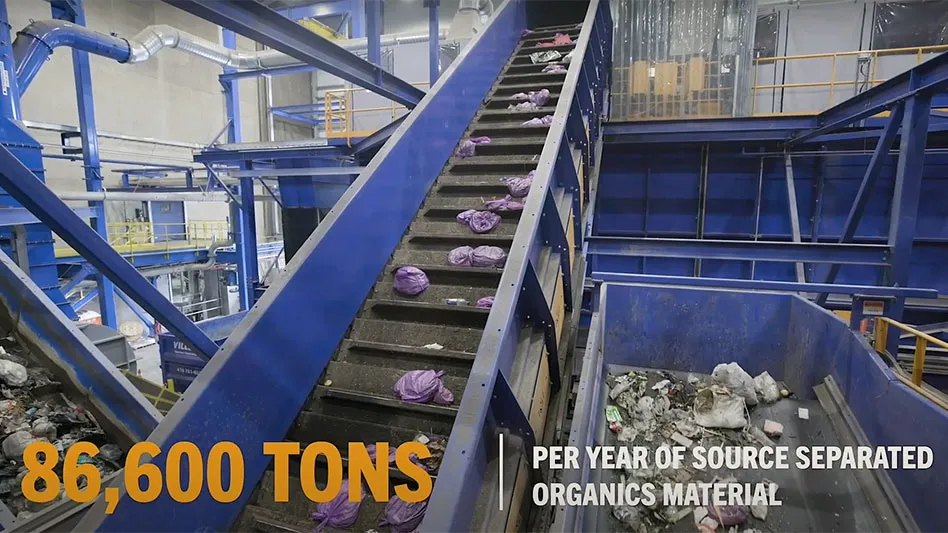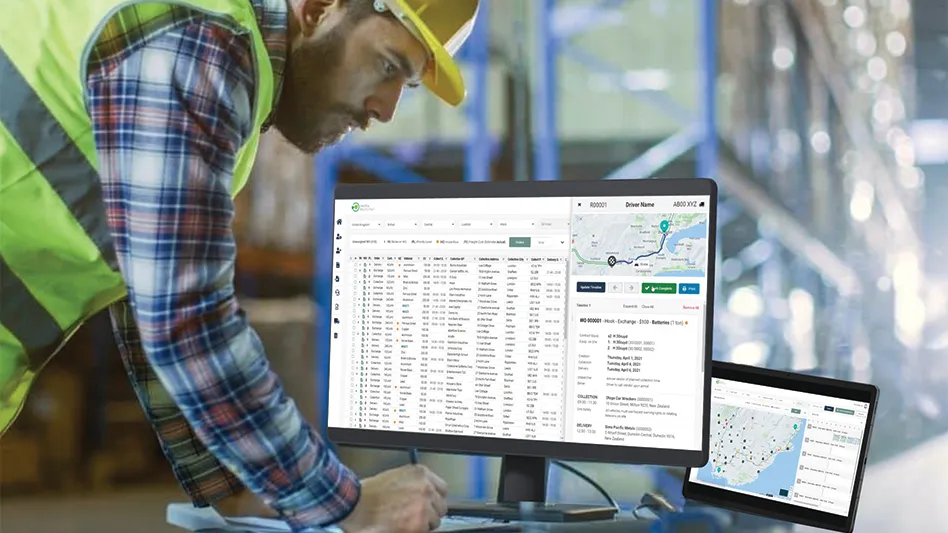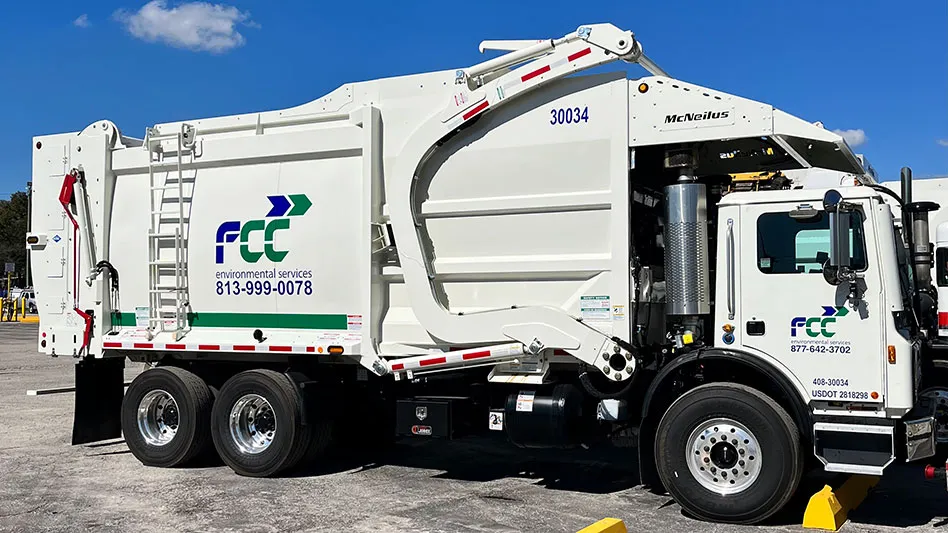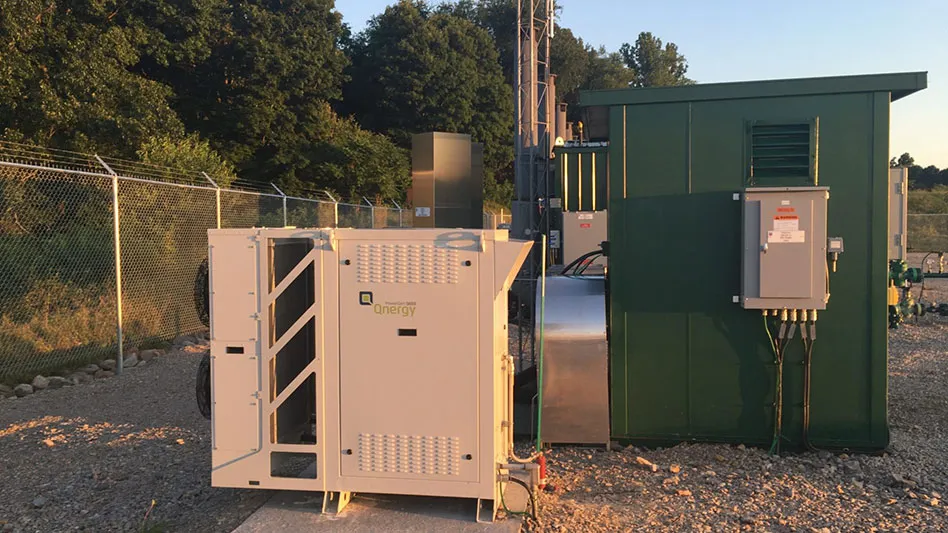
In reference to municipal solid waste (MSW), the term conversion technology has traditionally been used to indicate the thermal conversion of materials into energy, usually electricity. While this generally remains true, the industry is evolving. New technologies—and in some cases, innovative applications of older technologies—use MSW to create a range of chemicals, liquid and solid complex fuels, and other innovative and useful products. There have been few new projects using traditional thermal conversion technology constructed in North America in the past decade; however, some long-awaited novel non-thermal conversion facilities are beginning to come online. These nontraditional conversion processors do feature interesting additions and noteworthy crossovers from other industry sectors.
At the U.S. Department of Energy’s Bioenergy Technologies Office (BETO) MSW Workshop in January, there were a number of presentations regarding the potential uses of materials recovered from MSW that can be converted to other materials, chemicals or fuel in a similar manner to biomass materials. During one collaborative breakout session, barriers or challenges to utilizing different feedstocks for conversion technologies were discussed and ranked. Understanding the composition of the material streams prior to conversion was by far the most important barrier cited when discussing the use of MSW as a feedstock. Historically, BETO has focused on biomass technology, but it has recently begun looking more to feedstocks from MSW sources.
Most conversion technologies seem to perform best with fairly homogeneous material characteristics, or at least consistent material characteristics. There are certainly technologies that can handle heterogeneous materials, but the fact remains that only mass-burn facilities are currently processing MSW as it is collected from residential and commercial generators with no additional preprocessing. All other forms of conversion and recovery of recyclables, or other renewable materials, require additional equipment to prepare the materials for conversion.
Based on the conclusions from the BETO workshop, many of these processed streams will also require some composition analysis. Advances in robotic vision systems and optical sorting technologies currently used at single-stream material recovery facilities (MRFs) may also translate to a better understanding of the composition of conversion material streams. These vision systems should also be able to, eventually, give conversion processors relevant information about material streams in real time. This vision system advancement has the capacity to revolutionize the capabilities of many conversion technologies.

Mixed waste processing and conversion
There have been recent North American projects that use conversion technologies with similar upfront processing systems even though the final commodity outputs vary. Included in these projects are the new online processing systems at Coastal Resources/Fiberight in Maine, Entsorga in West Virginia, and RePower South in South Carolina. Then there are system retrofits such as at Red Wing, Minnesota’s refuse-derived fuel (RDF) facility and soon-to-be fully online processing systems such as Fulcrum’s in Nevada and Wasatch Integrated Waste Management District (WIWMD) in Utah. There are also other more mature mixed waste processing (MWP) systems, such as in use at Continuus Materials’ facility in Pennsylvania, that have recently changed the output from their system to something completely different.
Each of these locations are recovering recyclables from the MSW stream, yet, the intended outputs can be different. Fiberight is recovering pulp fiber from the MSW along with other standard recycling commodities, and they are exploring generating other potential products from the system’s material streams. Entsorga, RePower South and WIWMD are creating solid fuels for cement kilns or similar applications in addition to recovering high-value recyclables from the MSW. The WIWMD system will also process single-stream recyclables on days when it is not processing MSW. Red Wing’s retrofit is creating a clean RDF and is helping recover more recyclable materials than before. Fulcrum’s front-end processing is currently operational, and the goal is to create jet fuel from the processed MSW. Continuus Materials previously was producing a fuel for cement kilns and has transformed its back-end process to now produce an innovative low-slope roofing board from the processed trash. While all of these systems are creating something different from MSW, the front-end processing required to properly segregate and prepare the material streams is similar.
Front-end processing and interchangeability of back-end equipment
The general idea of MWP is to de-bag material so that it can be sorted by size (screening), density (air separation) and material type (sorting). This process can also include size reduction using a shredder. Once materials are de-bagged and segregated, they can also be separated by shape using a two- or three-dimensional screen. Depending on the materials recovered and the output needs, the segregated streams can be sorted using optical sorters, magnets, eddy currents and robotics for other output-specific characteristics. All the systems mentioned previously are recovering metals, and many recover certain plastics and fibers for recycling. Also, if fuel is one of the outputs, it is desirable to remove materials containing chlorine, such as PVC. This is often accomplished using optical sorters. These separation systems have similar front-end processes that segregate MSW materials into more homogeneous streams for recovery or further processing. There are some exceptions, however, including Entsorga’s Biodrying process, which is an extra step in the MWP process, but may be advantageous based on the desired final output.

While the front-end processes can be similar, the back-end processing can differ and be potentially interchangeable. These front-end processing system can be used to segregate materials and recover recyclables, but the remaining output streams can be processed in any number of ways to create a desired product. For example, the specialized equipment used for recovering pulp or creating jet fuel are not tied exclusively to one specialized front-end process. This means that as long as a versatile and vetted front-end system is installed, the back-end equipment can change depending on needs, market forces, technology advancements and other variables. Continuus Materials, for example, has undergone several changes at its Philadelphia plant with its back-end processes and outputs while not significantly changing its front-end processing. The result translates to having greater flexibility in which back-end technology to employ.
The significance of interchangeability is that public entities have traditionally been averse to the cost risks of large processing systems for commercially unproven conversion technologies. While this hesitation is understandable, perhaps this is the wrong way to look at things. With the knowledge that the front-end MWP system would still be able to process MSW and capture traditional recyclable materials that were misplaced or misdirected in the waste stream (reducing the amount of materials landfilled), regardless of what is happening to the other output streams, municipalities and authorities might be more willing to work with conversion processors to install proprietary equipment on the back-end of the process. Then, if that process turns out to not be as commercially viable as anticipated, another processor can install its system at the back end of the MWP facility. Using this method, the risk for the processor only pertains to the proprietary equipment that is replaceable on the back-end, and the authority only has to finance the front-end processing, which can have other uses and benefits to the community.
Output composition
As stated previously, the material composition of the outputs from these processing systems are of great interest to the conversion technology sector. Samples can be sent to labs for moisture content, heating value and elemental composition, but this also takes time and does not necessarily reveal what items composed the incoming material. Additionally, most material composition studies are currently conducted manually, which takes days to collect a sufficient number of samples in order to produce statistically significant results. Conversion technologies that create a physical material (as opposed to creating electricity) can also be used to test the products after production (such as when making liquid fuel) for quality, consistency and content. The problem with this is that post-testing is not always point-specific, so it is difficult to control what variable may have affected quality. The desire for real-time composition knowledge to better regulate and optimize the conversion processes is needed to further advance these technologies so they can better utilize MSW as a feedstock.
Future improvements
Luckily for industry participants, the improvements in sensors, recognition software and artificial intelligence (AI) learning capabilities currently utilized by robots in MRFs may have carryover uses in real-time composition analysis in MSW streams. These robots are used to identify and recover and/or clean recyclable commodities. These vision systems will likely require a broad range of sensor technologies including shape recognition, infrared sensing, color identification, and elemental content sensing to properly categorize the material streams of interest.
While the need is there, the integration of the various technologies is still in the early stages of deployment. It is hoped that additional research funds from BETO and other outlets will help accelerate the development of these sensors for composition analysis. Specialized conversion technology utilizing MSW as a feedstock may struggle gaining traction until the composition readers become more sophisticated and can be integrated to meet the needs of the waste conversion entrepreneurs. Continued technological advancement and dividing up some of the financial risks and hurdles to these promising startup companies will help prompt innovation for creative uses of materials recovered from traditionally landfilled MSW.

Explore the May June 2020 Issue
Check out more from this issue and find you next story to read.
Latest from Waste Today
- AMCS showcasing Performance Sustainability Suite at WasteExpo
- New Way and Hyzon unveil first hydrogen fuel cell refuse truck
- NWRA honors award recipients during annual breakfast at WasteExpo
- Rubicon selling fleet technology business, issuing preferred equity to Rodina Capital
- Machinex to feature virtual tour of Rumpke MRF at WasteExpo
- Reworld releases 2024 sustainability report
- Novolex invests in Ozzi
- Routeware to unveil product updates at Waste Expo





